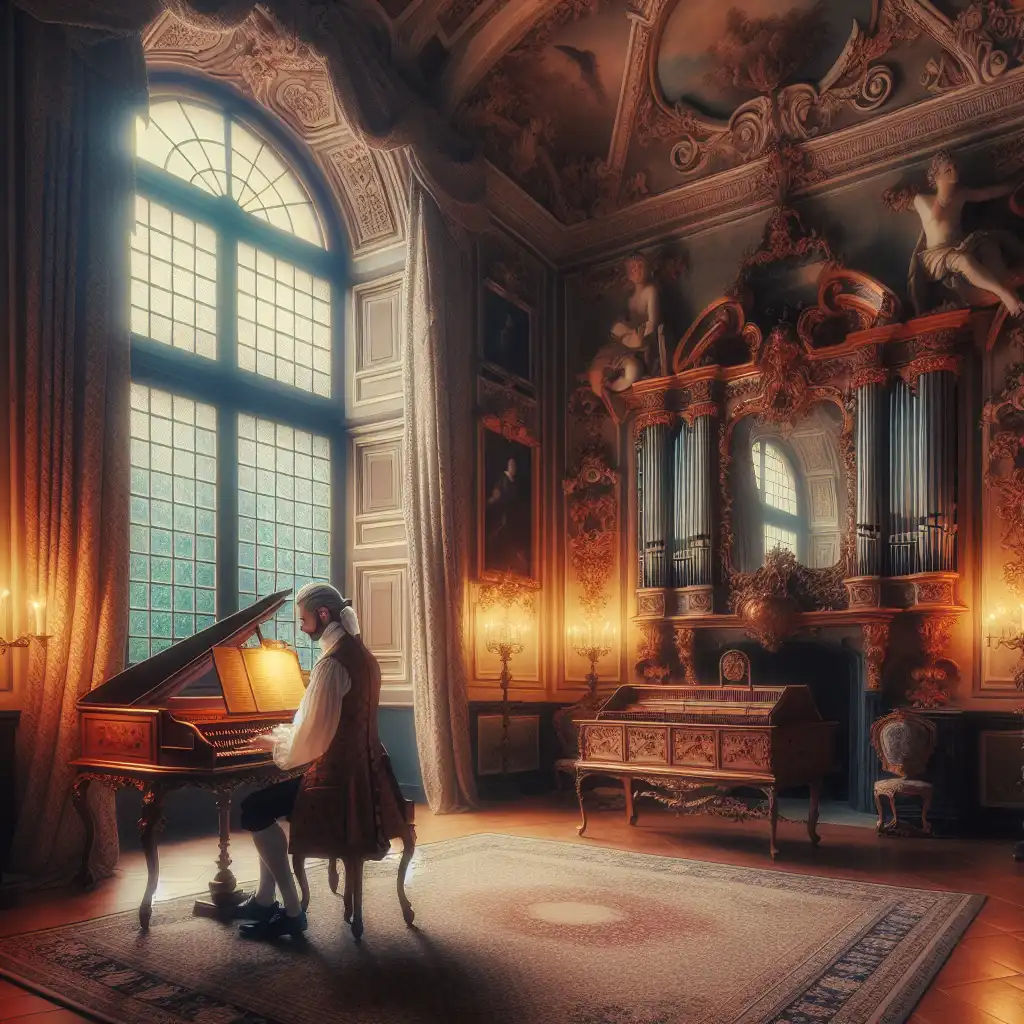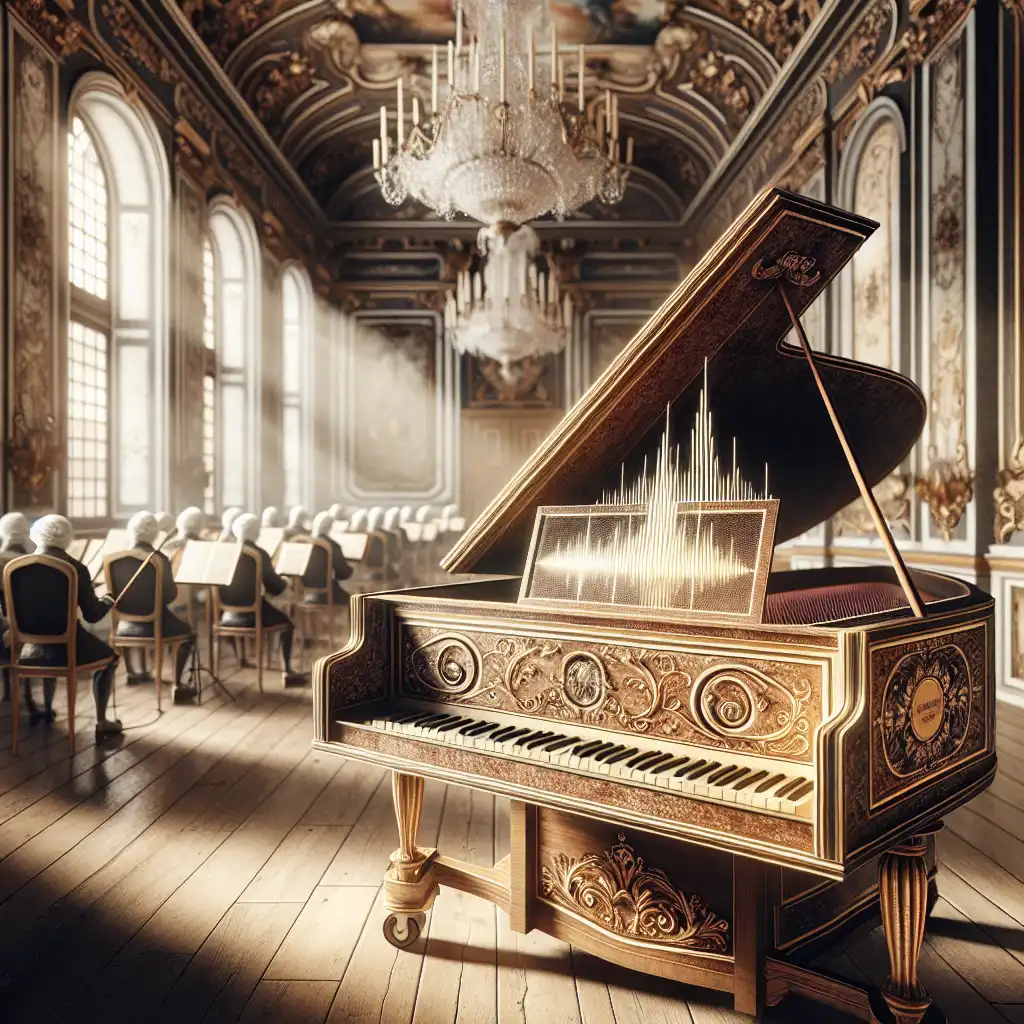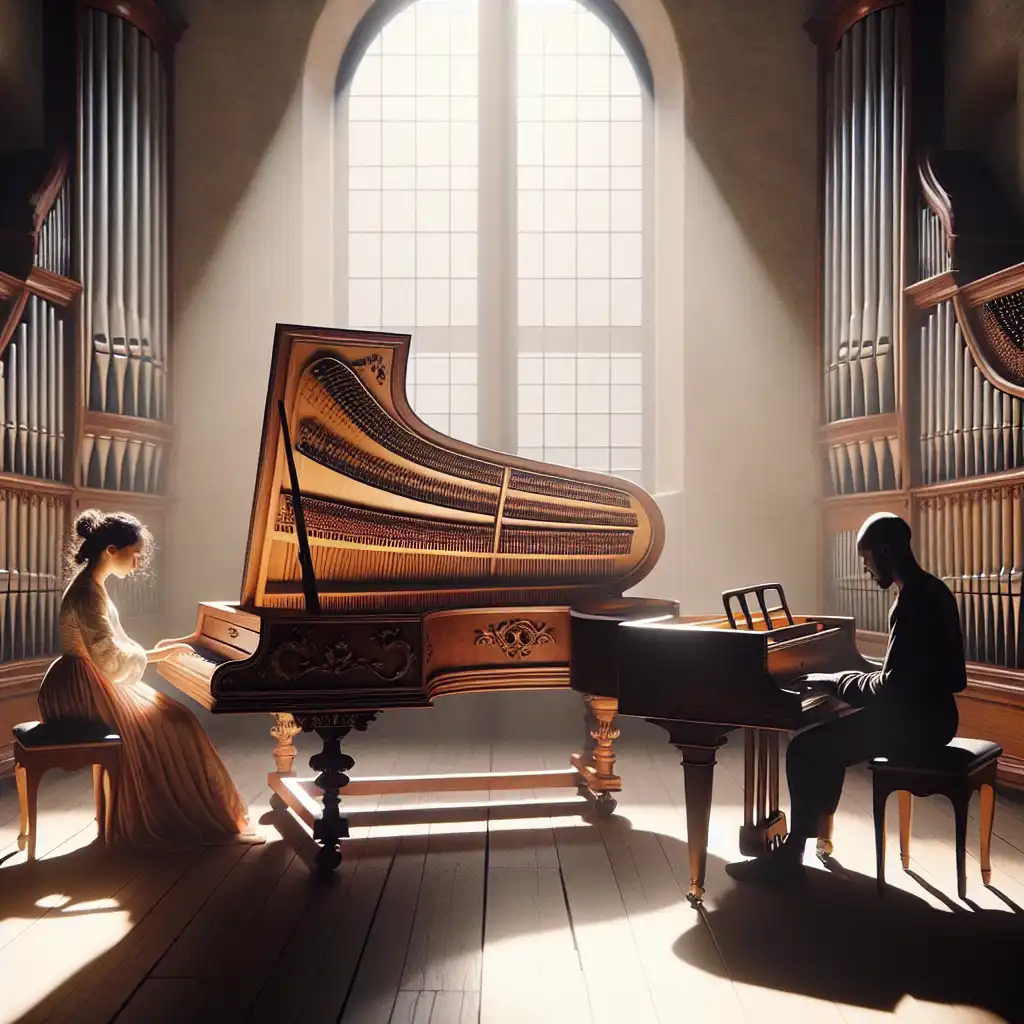
Harpsichord
Historical Use
The harpsichord was popular in the 16th to 18th centuries, so it often appears in historical or classical music contexts.  Baroque composers like Bach often wrote pieces for the harpsichord.
Baroque composers like Bach often wrote pieces for the harpsichord.
Sound Quality
Unlike a piano, a harpsichord produces a distinctive, metallic sound because its strings are plucked, not hammered.  The harpsichord's sound can be heard clearly in the mix of old classical recordings.
The harpsichord's sound can be heard clearly in the mix of old classical recordings.
Not Volume Adjustable
The harpsichord cannot play dynamics (loud and soft) because the mechanism plucks strings with consistent force.  Even when pressed hard, a harpsichord key will not make a louder sound like a piano does.
Even when pressed hard, a harpsichord key will not make a louder sound like a piano does.